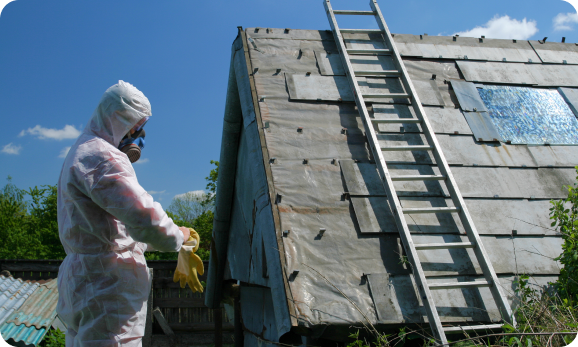Asbestos-laden mulch has been found in NSW, the ACT and Victoria so far this year, but could be a wider problem.
This article explains how asbestos could affect your business and how to mitigate, or hopefully, control the risks.

What is asbestos and what makes it so deadly?
Asbestos occurs naturally in Australia and some other countries. It’s been used as a building material – fibro sheeting – home insulation, hot water pipes, roofing, vinyl floor joints and more. That’s thanks to its strength, flexibility and resistance to fire and electricity. And it was cheap to produce.
Finally in 2003, Australia banned the sale, use and important of asbestos.
What prompted the ban was the mineral’s microscopic fibres which can be breathed in, get trapped in the lungs and cause the fatal diseases asbestosis or mesothelioma. About 4,000 Australians die annually due to asbestos.
Two types of asbestos have been found in mulch – the highly dangerous friable asbestos and bonded asbestos fragments. Friable asbestos is easy to crush and that’s when fibres are released.
Meanwhile, if asbestos has been bonded into another product, such as fibro-cement sheeting, it’s less likely it will break down and fibres be released into the air. It’s low risk, but there are still risks.
NSW’s investigation into mulch crisis
NSW’s Environment Protection Agency (EPA) and similar bodies in other states are investigating how asbestos came to be incorporated into mulch in garden beds.
You can keep watch on work of the NSW EPA and the government-appointed asbestos taskforce here. Typically, asbestos-containing mulch is illegal to provide or sell in Australia. The EPA regularly audits recycled mulch providers.
While its investigation into the contaminated mulch continues, the EPA can’t rule in or out any source. Here’s the updated list of the NSW sites being investigated for asbestos-contaminated mulch and the results. It includes homes, hospitals, medical facilities, parks, schools, and shopping centres.
WHS duties for businesses that work with asbestos
Ensure your business doesn’t add asbestos to the supply chain. As well, be alert to any suspicious material in mulch on your site or which you’ve provided to others.
Safe Work Australia regulates businesses that work with asbestos. Its model Work Health and Safety (WHS) regulation spell out these duties, including:

- Train all workers who might work asbestos
- Arrange for the safe removal of asbestos
- Ensure you have an asbestos management plan
- Be licenced to remove and dispose of asbestos (there are three licence categories), and
- Provide and pay for health monitoring of your staff who work with asbestos or who could be exposed to asbestos-related work.
Managing the risks of asbestos
This short ABC Radio report also goes into detail about the health risks of asbestos-contaminated mulch.
Ensure you don’t contribute to asbestos entering that supply chain whether that be via your home or workplace.
About a third of all Australian homes contain asbestos products, says the Asbestos Safety and Eradication Agency. That’s an issue when unsuspecting renovators start revamping and builders don’t check and assess if asbestos could be in the building material earmarked to be woodchipped as mulch.
For workplaces, there’s one step before that – an asbestos register. These list all identified or potential asbestos in a workplace. The aim is to make sure workers and others in that workplace don’t accidentally disturb asbestos.
Consider if your premises needs such a register and connect with an appropriate expert to verify. The NSW Code of Practice for controlling asbestos in the workplace offers overarching instructions for licenced workers to remove, enclose, encapsulate or seal asbestos in the workplace.
Be mindful of naturally occurring asbestos too – an air monitoring program can help here to guide on exposure levels and specific risk controls.
Back to basics
Revisit your risk management practices to identify hazards, assess/eliminate and control risks where possible.
Comprehensive business insurance should be part of your risk management plan – talk to us to ensure you’re covered.

